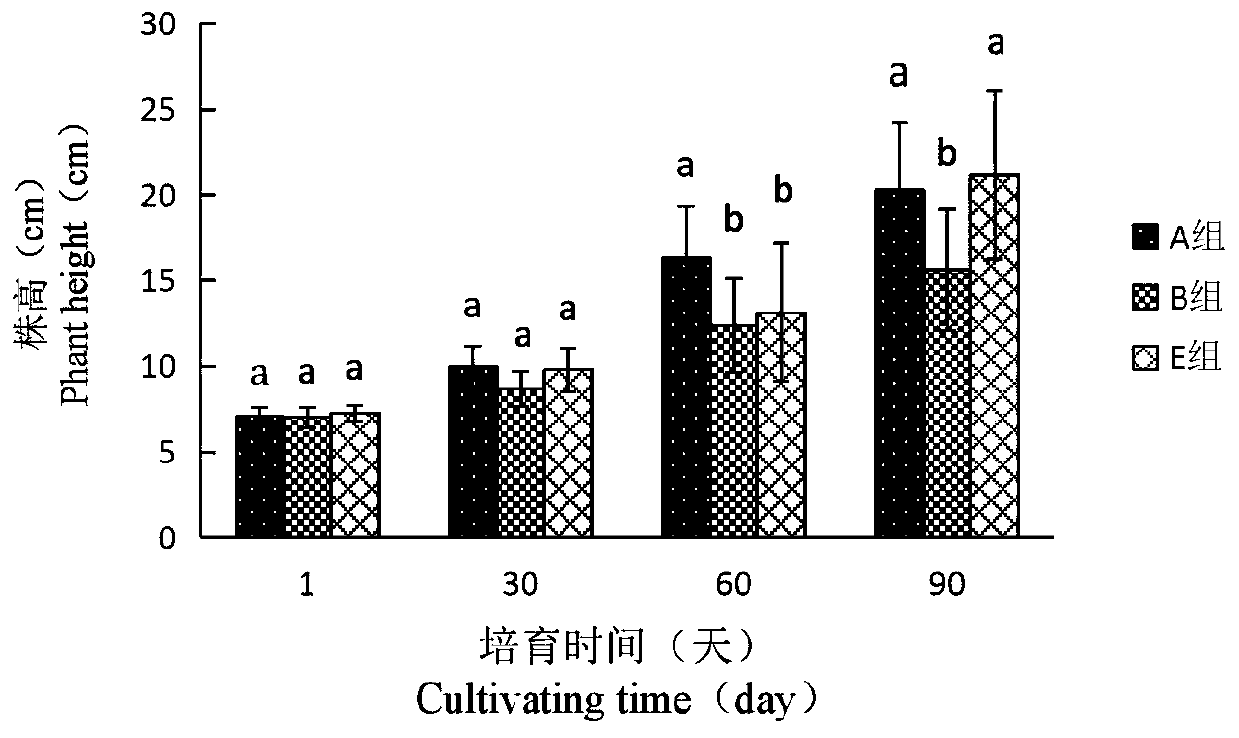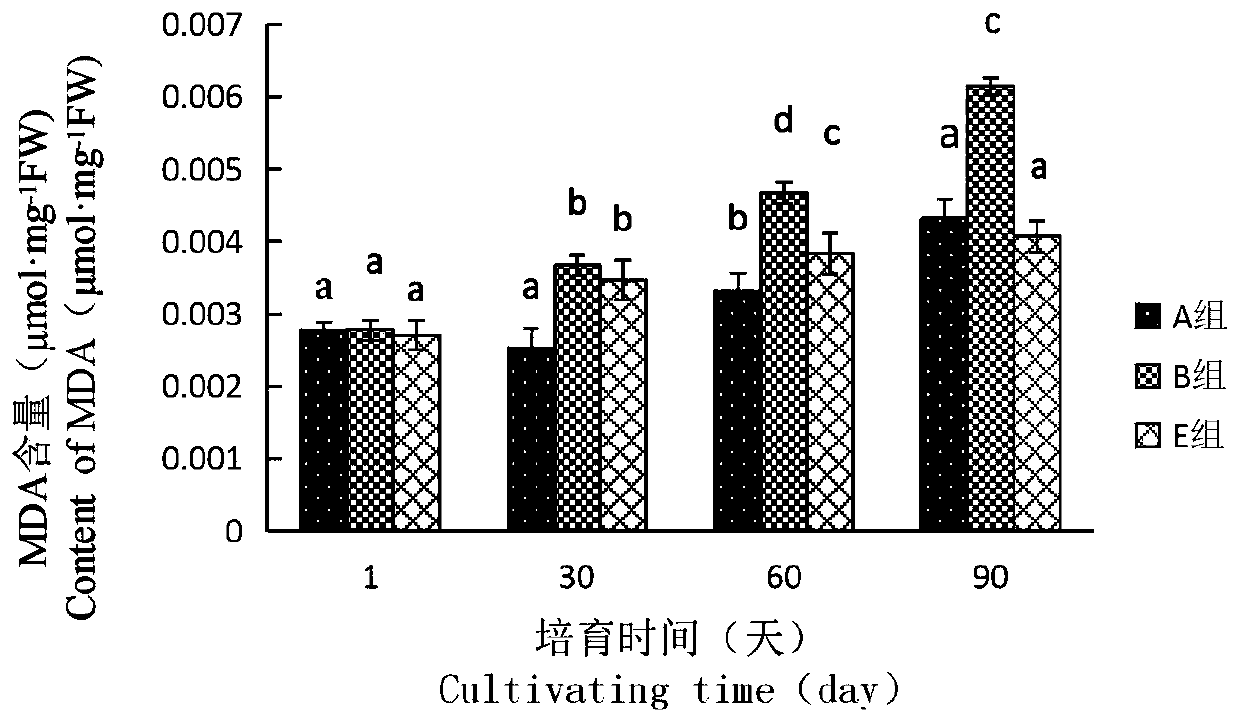Potting method to relieve continuous cropping barriers of Pogostemon cablin
A technology of continuous cropping obstacles and patchouli, which is applied in the field of potted plants to alleviate the continuous cropping obstacles of patchouli, can solve the problems of insufficient utilization of land resources and climate resources, increase production costs, etc., and achieve low production costs, low production costs, The effect of making full use of land resources and climate resources
- Summary
- Abstract
- Description
- Claims
- Application Information
AI Technical Summary
Problems solved by technology
Method used
Image
Examples
Embodiment 1
[0032] Embodiment 1, a kind of potted planting method that alleviates patchouli continuous cropping obstacle
[0033] S1 seedling cultivation: the patchouli seedlings of eight weeks of tissue culture and hardening are used as the patchouli seedlings, and the perilla seedlings obtained by the seed propagation method are used as the perilla planting seedlings, and the propagation method of the perilla planting seedlings is: Put perilla seeds in a culture bag to germinate. The substrate soil of the culture bag is composed of river sand and red soil with a volume ratio of 0.9:0.6. After germination, cultivate them for 15-20 days, and select purple perilla seeds with a plant height of 5-10 cm. Su seedlings are planted as perilla seedlings;
[0034] S2 container preparation: choose the container that is 50cm long, 45cm wide, and 20cm high as the planting container, add 8 kilograms of substrate soil in the planting container, and the substrate soil is made of red soil with a volume r...
Embodiment 2
[0037] Embodiment 2, the influence of intercropping of patchouli and perilla on the plant height of the second crop of patchouli
[0038] 1. Test method:
[0039] The potted method for alleviating the continuous cropping obstacle of patchouli provided by reference example 1 is planted, wherein: according to the planting method of S4, all the patchouli planting seedlings obtained in the first row A row are planted in step S1, the plant spacing is 15~20cm, and the planting distance of the second row is 15~20cm. The planting method without any plants in row B of the second row is marked as patchouli / blank group (marked as group A), and the planting method of planting patchouli in the second row according to the distance between plants is marked as patchouli / patchouli Group (denoted as group B), the second row was marked as the patchouli / perilla group (denoted as group E) according to the planting method of planting perilla at a plant spacing of 15-20cm, cultivated for 90 days, an...
Embodiment 3
[0042] Example 3, the effect of patchouli and perilla intercropping on the number of leaves, stem diameter, chlorophyll content and leaf area of the second batch of patchouli
[0043] 1. Test method:
[0044] The potted method for alleviating the continuous cropping obstacle of patchouli provided by reference example 1 is planted, wherein: according to the planting method of S4, all the patchouli planting seedlings obtained in the first row A row are planted in step S1, the plant spacing is 15~20cm, and the planting distance of the second row is 15~20cm. The planting method without any plants in row B of the second row is marked as patchouli / blank group (marked as group A), and the planting method of planting patchouli in the second row according to the distance between plants is marked as patchouli / patchouli Group (recorded as B group), the second row is marked as the patchouli / perilla group (recorded as E group) according to the planting method of planting perilla at a pla...
PUM
 Login to View More
Login to View More Abstract
Description
Claims
Application Information
 Login to View More
Login to View More - R&D
- Intellectual Property
- Life Sciences
- Materials
- Tech Scout
- Unparalleled Data Quality
- Higher Quality Content
- 60% Fewer Hallucinations
Browse by: Latest US Patents, China's latest patents, Technical Efficacy Thesaurus, Application Domain, Technology Topic, Popular Technical Reports.
© 2025 PatSnap. All rights reserved.Legal|Privacy policy|Modern Slavery Act Transparency Statement|Sitemap|About US| Contact US: help@patsnap.com



